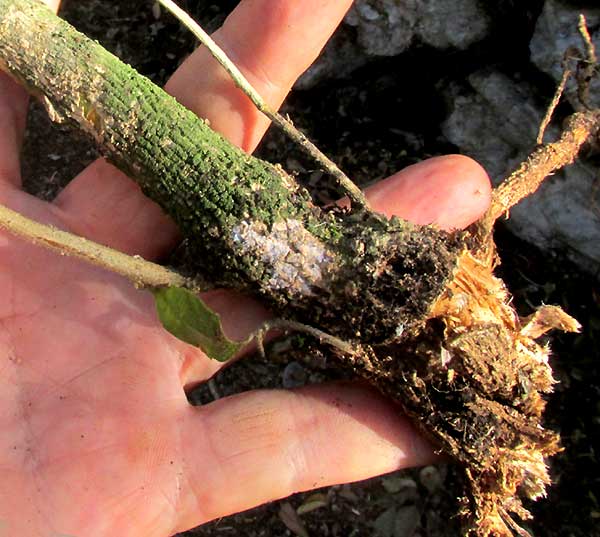Excerpts from Jim Conrad's
Naturalist Newsletter
from the October 10, 2017 Newsletter issued from Rancho Regensis north of Valladolid, Yucatán, MÉXICO;
elevation ~40m (~130 ft), N~20.876°, W~88.170°
APHELANDRAS FLOWERING
Every season has its special flowering plants and every flowering plant has a special season when it's prettiest. Nowadays, alongside roads and trails through the woods, you often see the very handsome, head-high bush shown below:
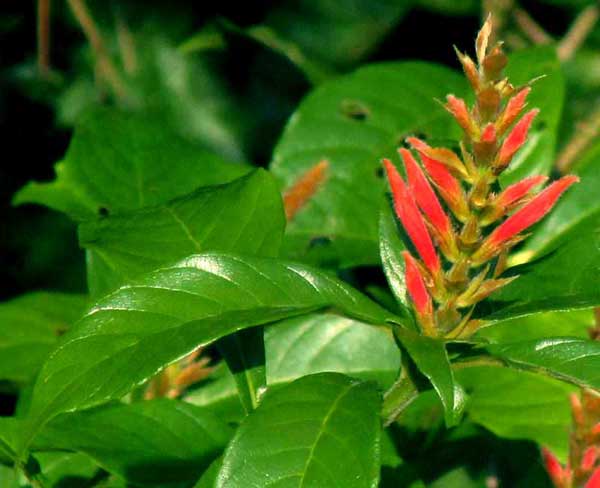
A close-up of an open corolla's "mouth" is seen below:
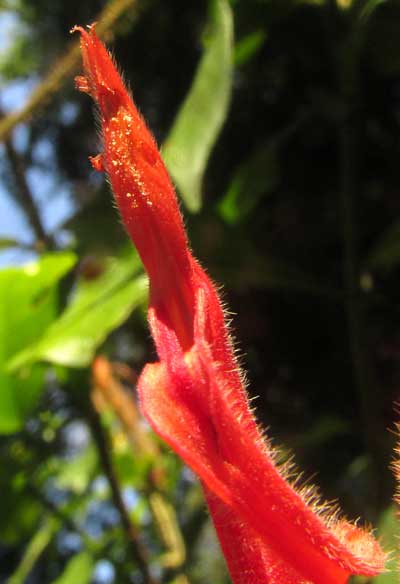
Notice that the corolla's top lip juts straight out, that the pollen-receiving stigma extends just a tiny bit beyond that lip, and that four stamens with red anthers are held close against the lip. Such a strongly 2-lipped, or bilaterally symmetrical, corolla narrows down quite a bit the number of plant families we might have here. The possibilities are narrowed even more by what's shown below:
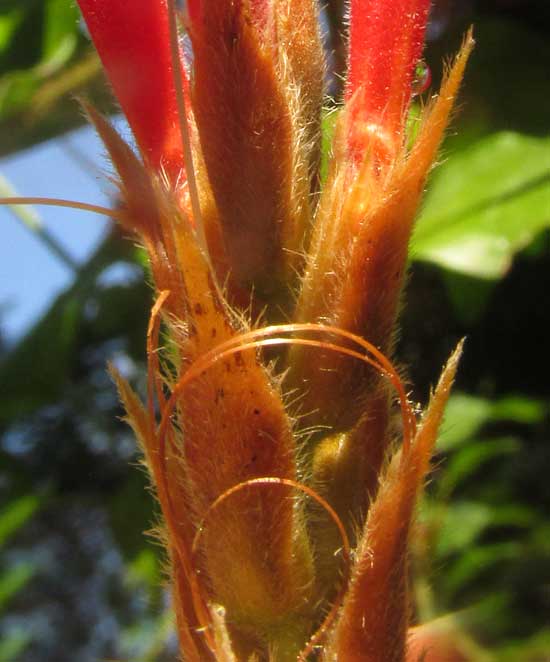
In the bottom half of that picture you see where pollinated flowers have dropped their corollas, leaving curling styles, and below where the corollas were are honey-colored, hairy, sharp-pointed bracts, or modified leaves. A conspicuous bract subtends every flower. When you see such bracts, especially in conjunction with such persistent styles, you need to think Acanthus Family, the Acanthaceae.
This pretty plant is APHELANDRA SCABRA, found from southern Mexico through Central America to northern South America. In Spanish it's often called Cola de Gallo, or Rooster Tail.
One interesting feature of the flowers is that they bear nectar-producing glands. The glands are a little hard to make out in a picture, but most flowering heads bear ants supping nectar from the glands, which you can see below:
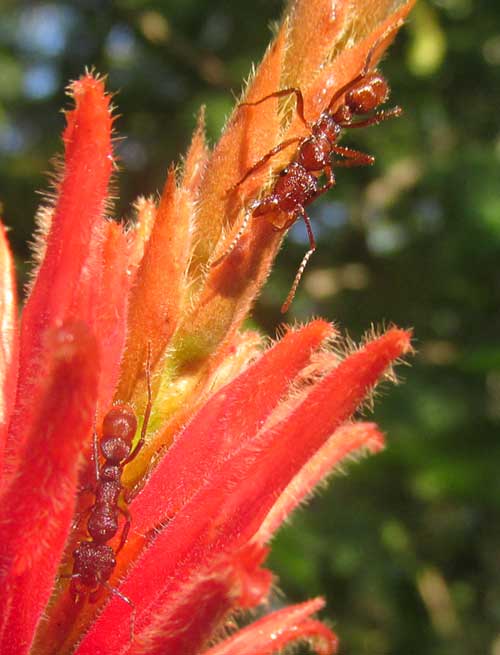
issued February 17, 2020 from the forest just west of Tepakán; elev. ~9m (~30 ft), N21.053°, W89.052°; north-central Yucatán state, MÉXICO
MORE PICTURES
Having better learned what a large and complex family the Acanthus is, and seen that to identify many species you need to note obscure features, here are some more images of this species, which is very common on the rancho:
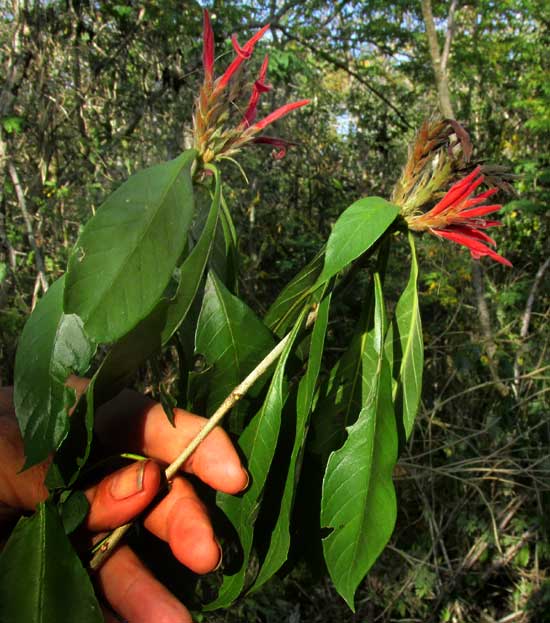
The above image shows how the leaves -- which bear "wings" along their long petioles, gather at branch tips. In the Acanthus Family sometime it's helpful to know the shapes of anther bases, and that's shown below:
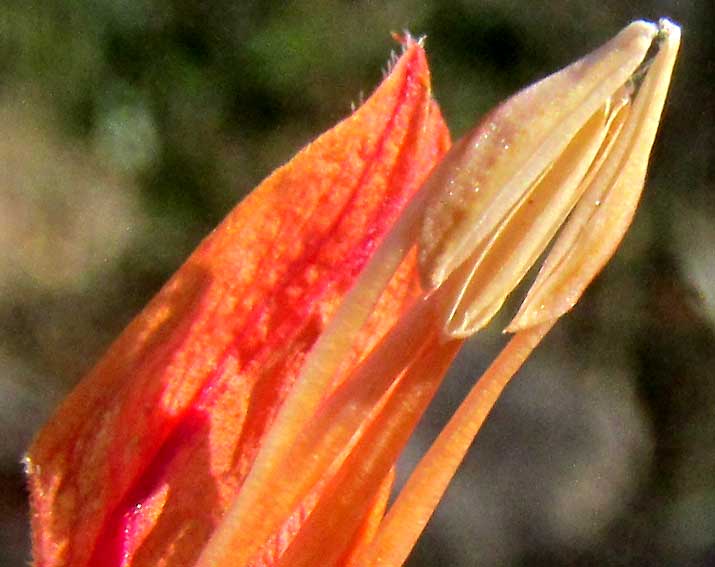
Few flowers of our plants at this season seem to have set fruits, but a very small number did, and an immature one is shown below:
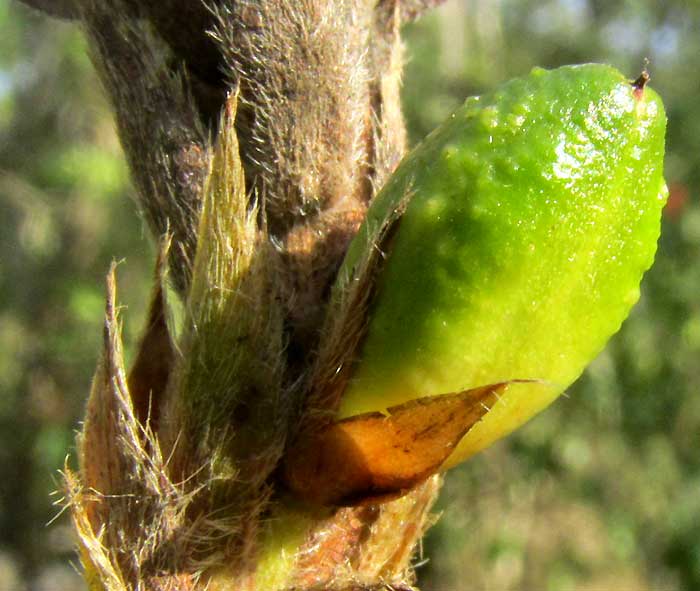
Many stems in the family are angled, but this species' are round in cross section, seen below:

This species becomes woody at the base, made clear in the following picture:
